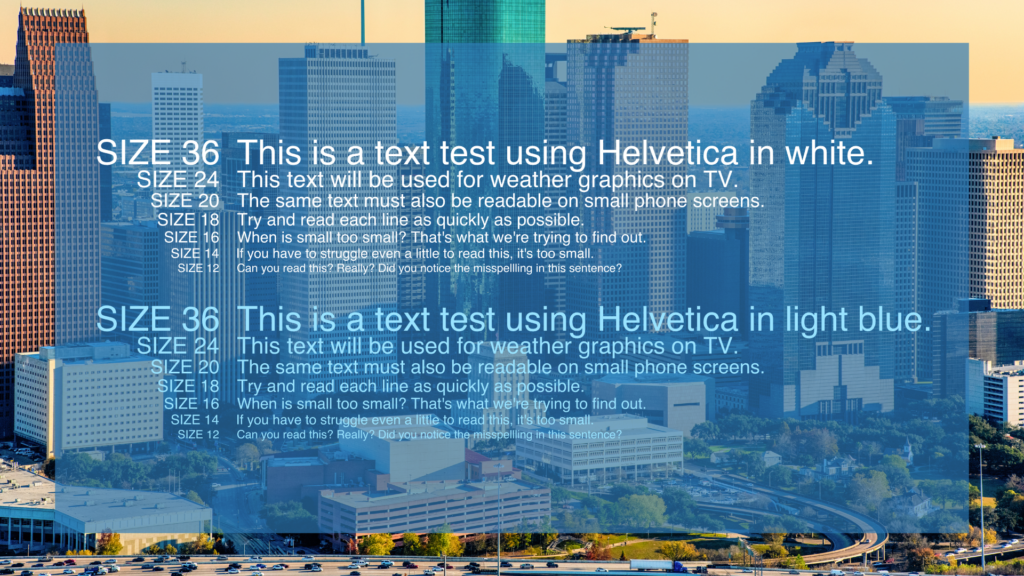Designing weather graphics for today’s consumers

Two network-owned television station groups recently updated their weather graphics with new backgrounds, banners, and icons. The new graphics look great on a computer screen and even better on a big-screen TV! But look at the same graphics on a smartphone, and you can barely read some of the tiny text.
The research is clear: many consumers watch daily weather updates on mobile devices.
High school journalism teaches us to write for the lowest common denominator. Meaning the content should appeal to as many people as possible. When it comes to weather graphics, we should be producing for the smallest common denominator so the content is easy to read on 75” televisions as well as 4.5” phones.
Conduct a text test
Use the tech tool in your pocket to determine how small you should make the smallest text.
Create a graphic with different text sizes using the same colors and backgrounds that will be used on-air. Have several people look at the graphic on different phones and let them choose the smallest legible text.

Use that text size for the city labels and in the subtitle of the weather banner as a visual reminder to everyone on the team that this is the smallest text that should be used on any new graphic.
Can you hear read me now?
In addition to using big, bold text, there are several things broadcast meteorologists can do to visually communicate more effectively. Deliver one message per graphic. Eliminate anything on the graphic that doesn’t deliver that message. Deliberately use color as a communication tool. Finally, avoid confusing arrows and uncommon abbreviations.
Most weather graphics are on-screen for maybe 10-15 seconds, some less. In that short amount of time, our viewers must be able to understand the message being delivered. They can’t do that if the text is too small to read.
READ MORE: WHAT METEOROLOGISTS NEED TO KNOW ABOUT DATA VISUALIZATION
Tim Heller is an AMS Certified Broadcast Meteorologist, Talent Coach, and Weather Content Consultant. He helps broadcast meteorologists uplevel their performance and productivity by communicating more effectively and efficiently on-air, online, and on social media.
